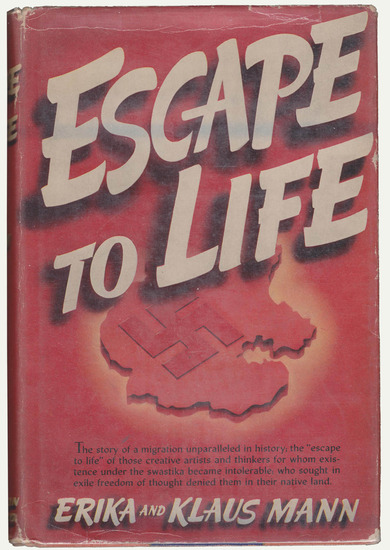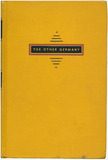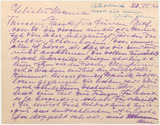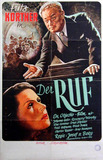Erika und Klaus Mann: Escape to Life / Escape to Life. Deutsche Kultur im Exil (1939/1991)
Erika und Klaus Mann: Escape to Life / Escape to Life. Deutsche Kultur im Exil (1939/1991)
Das Buch wird, in einer möglichst dramatischen, abwechslungsreichen Form, von den Schicksalen vieler – teils berühmter, teils unbekannter – Exilierter berichten. Es soll, ausser unserem Text, auch Dokumente von den „Helden“ des Buches selber enthalten; mit „Dokumenten“ meine ich: Tagebuch-Notizen, oder Briefe an uns, oder kurze Autobiographien.
[The book will, in the most dramatic and varied way possible, recount the fates of many – some famous, some unknown – exiles. It is also to contain, aside from our text, documents from the ‘heroes’ of the book themselves; by ‘documents’, I mean: diary notes, or letters to us, or short autobiographies. (ed. trans.)]
Klaus Mann, letter to Heinrich Mann, 26 March 1938
After Klaus Mann had published a book with his one-year-elder sister Erika about their around-the-world trip in the late 1920s, the American publisher Houghton Mifflin offered the two close siblings another chance to work together on a book beginning in 1938. Following assurances that they were “personally acquainted” with nearly all of the named people, they received the assignment to write an introductory monograph on the most important German-speaking émigrés. Within a few months they had compiled a 400-page-strong who’s who of German émigrés in Europe and America, including written and photographic portraits of artists such as Lion Feuchtwanger, Franz Werfel, Fritz Kortner and Elisabeth Bergner. Erika and Klaus Mann formulated the intention of the book in the foreword: “What we have tried to do is present a cross-section of the complexity of German emigration, a vivid picture of the diversity of its faces and intellectual forces. We wanted to show and illustrate: it is not individuals who were expelled for some particular reasons. Rather, the victim of Nazi-fanaticism is a complex culture – the true German culture, which has always been a creative part of European culture and world culture.” (ed. trans.)
For the first edition of Escape to Life published in 1939, the texts by the Mann siblings were translated into English by the well-known Scottish publicist Mary Hottinger-Mackie. The volume became one of their few financial successes. The German edition first appeared in 1991 with the subsequently added subtitle Deutsche Kultur im Exil in the Munich issue of the Edition Spangenberg.







